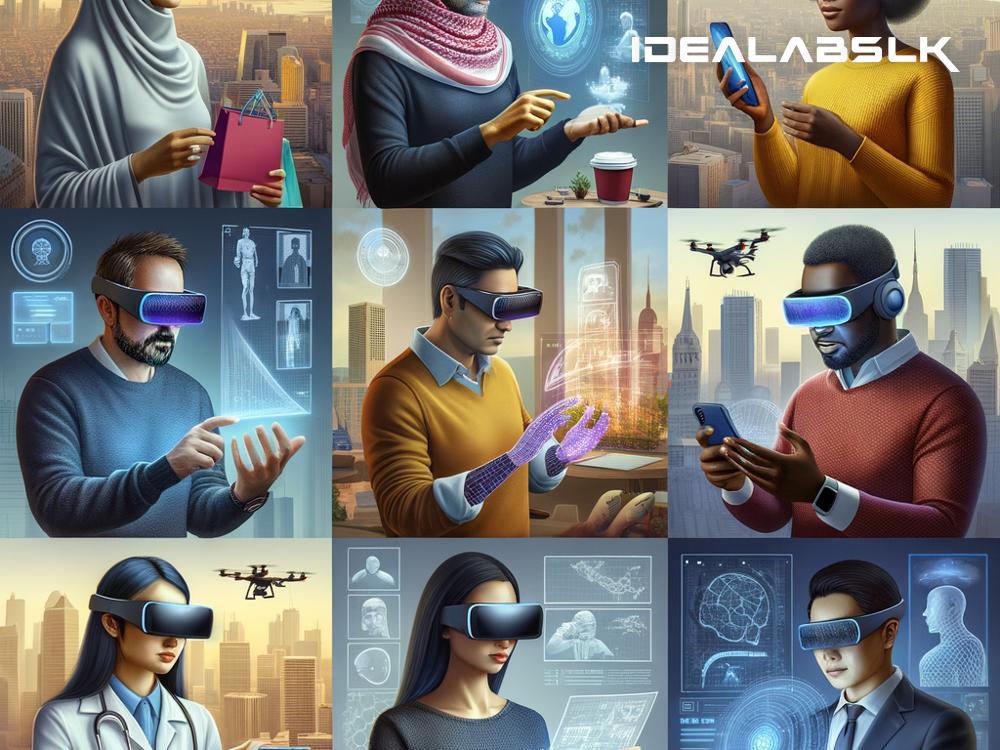How AI is Changing the Game in Augmented Reality Wearables
Augmented reality (AR), the technology that superimposes computer-generated images on our real-world view, isn't a thing of the future anymore—it's our present. And when you merge AR with wearables, like glasses or watches, you get a hands-free experience that can take your everyday tasks to a whole new level. But what's really sending waves through this tech? Artificial Intelligence (AI). Let’s dive in and see how AI is boosting AR experiences in wearables, making them smarter, more intuitive, and a lot more fun.
Understanding the Basics
First, let's break down what we mean by AR and AI. Augmented Reality is all about adding layers of digital information (like images, sounds, or texts) on top of the physical world around us. Think Pokémon Go, but the applications go way beyond catching virtual creatures.
Artificial Intelligence, on the other hand, refers to the simulation of human intelligence by machines. It’s what makes it possible for machines to learn from experience, adjust to new inputs, and perform human-like tasks.
Now, let's imagine combining these two. You get wearables that not only show you the world in a whole new light but also understand and interact with you in a human-like manner. Incredible, right?
Enhanced Real-Time Information
One of the most immediate benefits of infusing AI into AR wearables is the ability to provide personalized, real-time information. For example, AI-powered AR glasses could recognize the restaurant you’re standing in front of and instantly display its menu, reviews, or even calorie counts for health-conscious individuals, right before your eyes. This seamless integration of information into our visual field makes for a more enriched experience of the world around us.
Learning and Adapting to User Preferences
AI thrives on data, and the more it has, the better it performs. By collecting data on how you use your AR wearable, AI can learn your preferences and habits. This means your AR experience can continuously evolve to better suit your needs. Imagine your AR glasses automatically pulling up your favorite team's scores as you glance at a TV showing a sports game, or discreetly providing you with conversation prompts while you're networking at a professional event. With AI, your AR wearables get to know you almost as well as you know yourself.
Navigating the World with Ease
Another fascinating use-case is navigation. Traditional 2D maps on our phones are useful, but what if directions could be overlaid directly onto the streets as you look at them through your AR glasses? AI can take it a step further by analyzing your route in real-time, advising you to avoid busy intersections, or even guiding you to a coffee shop you've never tried but is highly rated by users with similar tastes. This personalized guidance system isn’t just convenient; it could redefine how we explore our world.
Training and Educational Tools
Education and training are other areas where AI-enhanced AR wearables shine. For medical students, practicing surgeries on virtual patients viewed through AR glasses can provide invaluable experience without the stakes of real-life operations. Here, AI can simulate how the human body reacts to procedures, offering feedback and adjusting scenarios to challenge the student. It's not just for medical professionals; this technology can adapt to virtually any field requiring hands-on training, making learning more interactive and effective.
Bringing Social Interactions to Life
Finally, consider the social aspect. AR wearables can recognize faces and provide you with real-time information about the person you're speaking with, fetching data from your previous interactions or social media connections. But with AI, this goes beyond just recalling facts. It could analyze the tone of the conversation and help you gauge the mood or even suggest topics of interest based on the conversation history between you two, making social interactions smoother and more meaningful.
The Road Ahead
As exciting as these advances are, we're just scratching the surface of what's possible when AI and AR join forces in wearables. The key to unlocking their full potential lies in making the technology accessible, ensuring privacy and security, and continuously improving AI’s understanding of the world. As these challenges are addressed, we can look forward to wearables that not only change how we see the world but also how we interact with it, making every day a little bit more like science fiction.
So, whether you're a tech enthusiast, a professional looking to enhance your work, or just someone curious about the future, one thing is clear: AI-powered AR wearables are set to transform our lives in exciting ways. And who knows? Maybe they'll become as common as smartphones are today. The future is bright, and it's right before our eyes.

